Rhode Island
Library Association |
The Rhode Island Library Association is a professional association of Librarians, Library Staff, Trustees, and library supporters whose purpose is to promote the profession of librarianship and to improve the visibility, accessibility, responsiveness and effectiveness of library and information
services throughout Rhode Island.
Contact us at:
PO Box 6765
Providence, RI 02940
or rilibraries.org
|
|
|
Greetings!
Despite our mild winter, it's still exciting to say that summer is on the way! The days are getting longer, and RILA is gearing up for another wonderful annual conference. For those members who have yet to renew, the time is now! Remember that membership in RILA gets you a discount to the conference, a subscription to the RILA Bulletin, networking opportunities and much more!
Coming up in April, RILA is participating in the second annual Money Smart Week. Money Smart Week is a collaboration between ALA and the Federal Reserve Bank of Chicago intended for libraries to help promote personal financial literacy on a variety of topics to their patrons. Last year, over 30 states participated, and this year, it's even bigger! A number of Rhode island libraries are hosting events on a variety of financial topics. For more information, look in the News From the Field section.
Thanks for reading,
Andria Tieman & Corrie MacDonald
RILA Communications Committee Co-Chairs
|
|
2012 RILA Conference Preview
By Paula Anderson
Children's Librarian, Warwick Public Library
| 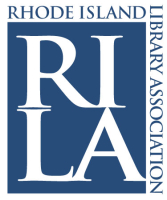 RILA Conference 2012: "Enriching Individuals, Strengthening Communities" May 31 and June 1, 2012 Bryant Center, Bryant University The 2012 RILA conference covers everything from laughs to leadership. Will Manley, author of the Booklist column "The Manley Arts" will be the President's Speaker on Thursday. His topic: Humor in the Workplace. Happily, he will also be hanging around to present two additional programs on the Director-Trustee relationship and retirement for librarians (you're never too young!). Keep the laughs going with a two-part series on using humor in the classroom-a spoonful of sugar helps the library instruction go down! A sense of humor is definitely a precious commodity. See why in Outreach Fail in which librarians share what happens and how to move on when even the best planning yields zero results. But it's not just giggles. Want to try something cutting edge? Learn more about creation spaces. Staffing tight? Find out how to develop great passive programs. Want to reach out? Don't miss the presentations on forming collaborative communities and providing services to recently released offenders. Children's librarians can learn about science, math and the arts for, yes, toddlers and infants. Teen librarians won't want to miss the session on planning a teen book festival. Graphic novel enthusiasts will want to examine visual traditions from all over the world and how they influence modern works. Enhance your tours, workshops and classes through writing learning outcomes. Demystify librarian's competing legal obligations vis-à-vis borrower confidentiality. For those who like to mix the abstract with the practical, try using metaphor to build leadership skills and smooth change. Look further at trends that will affect library leadership in the 21st century and learn how to enhance information literacy through programming for all ages. Technology offerings include tech trends affecting libraries now and in the near future, evaluating appropriate digital media for middle and high school libraries, and mobile technologies focusing on the iPhone/Pad/Touch. In addition, the Dorr Rebellion project not only provides insight into local history, but walks participants through the process of building a multimedia-rich archive. Our Friday President's speakers have really been on the front lines of history. Mandy Henk, Frances Mercati-Anthony and Danny Norton are better known as the People's Librarians. They'll be sharing their experiences creating a library while Occupying Wall Street. In that spirit of constructive and vibrant debate, get the inside scoop on the Family Friendly libraries movement from an activist. Controversial in a slightly different way, the mysterious author 44 will be commenting on Librarians as "proper" leaders. Generating no controversy is the fact that our popular poster sessions are back! These quick hits pack a lot of information into a brief amount of time. Hootsuite, Bored Games, and Homebound Services are just a few of the sessions offered this year. The Conference will be held at the Bryant Center at Bryant University on May 31 and June 1. Registration begins at the end of March and print brochures will be arriving around April 15. Please register online at www.rilibraries.org/annual-conference or scan the QR code on the brochure and register from your mobile device. You will also be able to print out a registration form from the website and mail it. |
|
2012: The Future of Libraries Can Be Found in Our Patrons
by Aaron Coutu
Asst. Director/Technology Coordinator, Cumberland Public Library
|  As we settle into 2012, a year with a Mayan prophecy about the end of the world approaching, librarians find themselves questioning the future of the profession. Our collections are seeing themselves replaced with the Internet and various e-book formats. The current economic situation has forced many libraries to cut staff, hours, and the ability to maintain a thriving collection. Could the Mayans be right not only about the world, but also about libraries? I would have to say that the answer to that question is a definite no ... at least when it comes to the end of libraries. There is no question in my mind that libraries are in a time of change. With that said, I don't think that change is necessarily bad. Many of these new changes in technology and economics is allowing us to rethink traditional library services and consider how we might do them better with the new tools that are now available to us. 
Remember when videocassettes first started playing a role in libraries? Many library staff said that we were appealing to the base interests of the community. The argument was that libraries were meant to be places of learning and provide opportunities to have access to higher culture. We were not meant to video stores. That sounds a little funny today when DVDs and video games have become common among most library collections. The Internet brought on similar negative views. Not only was it filled with websites and images that were of concern, but there were fears that the Internet, in all of its inferiority, might become more popular to our patrons. While there can be no question that the Internet has become a major source of information for our patrons both independently and with our help, it has not really replaced us. Many of our patrons now use the web to get the answers to the ready reference questions that were common. Thus, we have been freed up to help our patrons with more in-depth questions. So, what do these two examples tell us about our fears in regard to change? They show that libraries will continue to be pertinent as long as we look to our patrons and their needs and wants as we continue to define what services and collections we offer. Library staff must always strive to not only know our communities better so we can make sure to address changes in the population as well as the evolving the culture. That includes a shift in what is important for our patrons. Libraries, at their core, a really a sharing of economic resources (i.e. tax moneys) placed in our trust to buy materials that will be of interest to the patrons in our community. Sometimes that means expanding services into new areas and changing to meet the demands of the times. All if this just means that we just continue doing what we have always been doing: providing high levels of customer service. We will just be doing this in new ways, with new tools, and to meet new demands while also continuing to offer some of our patron's traditional favorites. As long as we are responsive in this way, libraries will remain relevant, and our patrons will fight for us to receive continued funding. So, you are probably asking what sorts of things I see for the future. What areas do I think libraries should be looking into in order to stay relevant with our patrons? Here is a list of five things libraries should consider as they broaden services to meet needs and to reach out to new patrons: - Libraries need to continue to be responsive in meeting the demand for various forms of e-content. From e-books to downloadable music and films, even the marketplace is looking at providing access to materials in an online format 24/7. This means not only being available, but having interfaces that are easy to use so that even the newest of the noobs can use their new tech toys no matter how little experience they might have with them.
- Libraries need to expand their use of social networking tools. Social media are meant to be interactive. We need to remember that the tools should not be used to just be another format to post the same old information that can be found on our websites and newsletters. Utilize questions and surveys to encourage comments from patrons and highlight news from the community that is not necessarily library-specific. Congratulate locals who are winning various awards! Cheer on residents who are being recognized for success. If people are vested in this type of interaction, they are more likely to stay subscribed.
- Libraries need to continue to add non-traditional collections to their holdings. Whether it's video games or telescopes, the only way we are going to broaden our appeal is to make sure we are the Third Place for the "everyman" or "everywoman." Our communities are diverse, and if we consistently only plan to meet the needs and wants of our library users, then we are fated to never connect with the potential patrons would be thrilled to utilize our offerings.
- Libraries need to get out from the walls that contain them. Library 2.0 is a great in that it means we are trying to connect with people without their needing to be within the library. They can receive information and services remotely. We shouldn't just do that online. Libraries really need to look to building partnerships and other means to provide access to services and information in other locations. This can be done in all sorts of environments such as supermarkets, group homes, schools, parks, and anywhere else our patrons might be clustering in groups.
- Libraries need to return to our roots in offering all sorts of neat programs that allow people to appreciate the Arts and socialize with others from the community with similar interests. This is at the core of being a comfortable and welcoming Third Place. Libraries are accomplishing this by showing films, poetry slams, and by bringing in local artists and musicians to share their work with an art showing or with a musical performance. Libraries will often include food and small seating areas so patrons can mingle and socialize. This means making new friends with shared interests and seeing the library as a fun place that is not just limited to work and research. Often, these programs are offered after-hours
As for the end of the world, we are going to have to wait until December 21st to see if the Mayans were right. I don't know about you, but I have a feeling that we will wake up on December 22nd to find another beautiful day. I look forward to working with all of you then! Planet Earth and libraries both have a lot more history to plan for in the future. |
|
Y.A. Lit...It's Not Just for Teens Anymore
By Brandi Kenyon Youth and Teen Services Librarian, South Kingstown Public Library
| 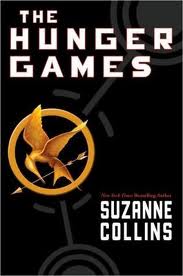 "Do you have the book Hunger Games?" "Yes, it's right over here in the Teen Section. Let me show you." "Oh...It's a teen book? Really...are you sure?" These days, many adults are beginning to delve into the young adult section of the library, although not without some hesitation. While teenagers have always read books from the adult section (choices often dictated by school assignments), there has been a bit of a negative stigma when the reverse occurs. After all, books published for teenagers couldn't possibly have the same literary merit as books published for adults, right? However, this is a misconception that is slowly fading, and not only due the widespread popularity of series such as Twilight and Hunger Games. In 2000, the establishment of the Michael L. Printz Award for Excellence in Young Adult Literature gave credence to the literary quality of young adult books. Young adult books are also gaining recognition by through reviews popular magazines such as People and newspapers such as the review section of the New York Times. In a 2011 Library Journal article, librarian Angelina Benedetti also cited that the rise of crossover authors has also given young adult literature a boost, an idea seconded by Michael Cart in his book "Young Adult Literature: From Romance to Realism". Carl Hiaasen, James Patterson, Harlan Coben, and Alice Hoffman are just some of the many authors who have written works for teenagers, bringing with them many of their adult readers. For adults who are willing to take a chance and are looking for their next great teen read, here are 10 suggestions they might enjoy. Be forewarned though--they are not all Twilight and Hunger Games read-a-likes. After all, young adult literature has so much more than that to offer than paranormal romance and sci-fi dystopias. 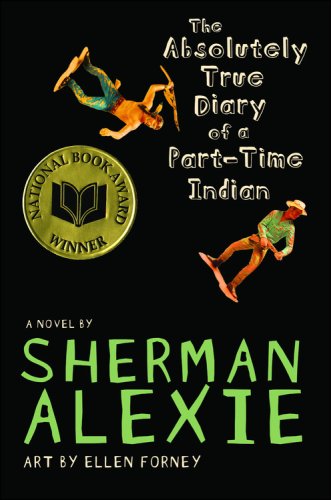 The Absolutely True Diary of a Part-Time Indian, by Sherman Alexie The Absolutely True Diary of a Part-Time Indian, by Sherman Alexie
After being bullied at his school on the reservation, Junior Spirit decides to attend an all-white school where he struggles with his identity and feelings about leaving the "rez". Tales of the Madman Underground by John Barnes In September 1973, high-school senior Kurt determines to be "normal," despite his chaotic home life and the affection he has for his friends in the therapy group dubbed the Madman Underground.  Strings Attached by Judy Blundell Fleeing from her family in Providence, Kit Corrigan finds herself caught in a mix of love, mystery, Broadway glamour, and Mob retribution in 1950 New York. Graceling by Kristin Cashore In a world where some people are born with extreme and often-feared skills called Graces, Katsa struggles for redemption from her own horrifying Grace, the Grace of killing. Revolution by Jennifer Donnelly Angry and grieving the murder of her little brother, musician Andi joins her father in Paris to work on a school project that uncovers a mystery from the French Revolution.  The Fault in Our Stars by John Green The Fault in Our Stars by John Green
Sixteen-year-old Hazel, a stage IV thyroid cancer patient, has accepted her terminal diagnosis until a chance meeting with a boy at cancer support group forces her to reexamine her perspective on love, loss, and life. The Knife of Never Letting Go: A Chaos Walking Book by Patrick Ness Todd and Viola are pursued by power-hungry Prentiss and mad minister Aaron as they set out across New World, searching for answers about their colony's true past and seeking a way to warn the ship bringing settlers from Old World. Unwind by Neal Shusterman An orphan, a rebel, and a Chosen One join forces while trying to escape being unwound, a process in which a person is harvested for parts. Will Risa, Conor, and Lev escape the insanity of their society? Marcelo in the Real World by Francisco X. Stork Marcelo Sandoval, a seventeen-year-old boy on the high-functioning end of the autistic spectrum, faces new challenges, including romance and injustice, when he goes to work for his father in the mailroom of a corporate law firm. The Monstrumologist by Rick Yancey In 1888, Will Henry chronicles his apprenticeship with Dr. Warthrop, a scientist who hunts and studies real-life monsters, as they discover and attempt to destroy a pod of Anthropophagi. |
|
Renovations at Warwick Public Library
By Mary Anne Quinn
Coordinator of Adult Services, Warwick Public Library
| |
The Warwick Public Library has always demonstrated an interest in keeping up with changing times in the library world by embracing recent library trends, including a focus on practicing excellent customer service and the addition of self-service options for patrons. A series of grants from the Champlin Foundation has enabled the library to adapt to changing times by renovating the Circulation area, adding a new Teen Space, and planning a Reference area renovation over the course of the upcoming year.
The first phase of the project, the Circulation area renovation, is complete.
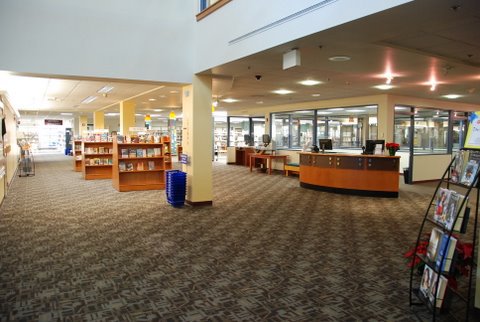 | | A welcome desk and new book area replaced the circulation desk. |
The old Circulation desk was removed, and three self-checks were installed. A Welcome Desk and Accounts and Cards Desk were added at opposite ends of the Circulation area. Attractive shelving gondolas were added to showcase the 7-Day and New books. The holds shelf is nearby, making it easy for patrons to pick up their holds, grab a bestseller or overnight movie, and check out. A staff person is always at the Welcome Desk to assist, if a library card has expired or a patron has some problem checking out. The renovation of this area has been well received, and most patrons are happy to help themselves. The staff has been able to streamline circulation processing behind the scenes, as less staff is needed on the floor.
The second phase is the new Teen Space, which officially opened March 5th.
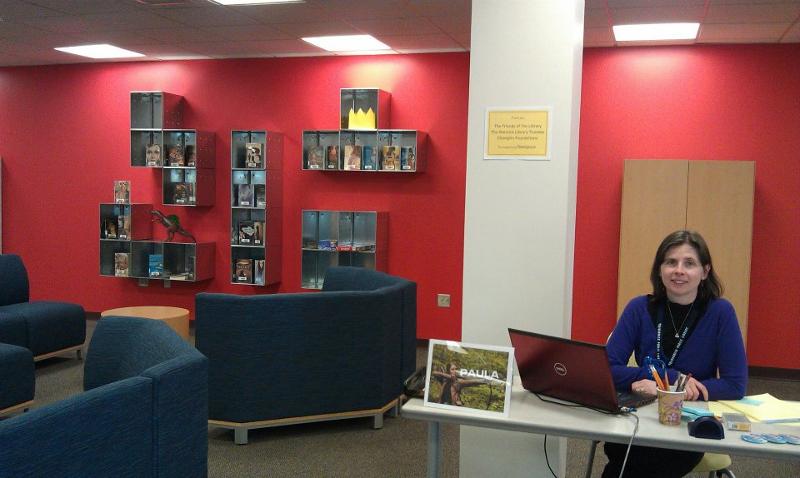 | | Teen Librarian Paula Anderson demonstrates how bold red walls set the Teen Space apart from the rest of the library. |
The library was fortunate to have an enclosed space which has been used until now as a quiet study room. The room is enclosed on one side by a half-glass wall, which makes the room completely visible from the Reference area. A new "Quiet Area" has been designated in the back of the building, using the same furniture that was in the Quiet Study room. The Teen Space will invite teens for gaming, studying, reading, and programs. The room will be flexible, with computer space, comfortable seating with modular furniture, and tables for homework or crafts.
The final phase will be the Reference area, which will add space for a media center, bringing together DVDs, audiobooks and music CDs. The present Reference desk takes up a great deal of space. It will be replaced with a smaller desk, a more flexible adult computer area, and the media center. This area is in the planning stages and should be completed in the fall.
Upheaval in the library has been minimal because the changes have been gradual and the library should be able to stay open throughout the renovations. The Warwick Public Library is continuing its ongoing mission to provide excellent customer service and serve as an educational and recreational resource for the citizens of Warwick.
|
|
Connecting with Books in the Community
By Babs Wells
Children's Librarian East Smithfield Public Library
Julie Mennella
Kindergarten Teacher, Old County Road School, Smithfield RI
| 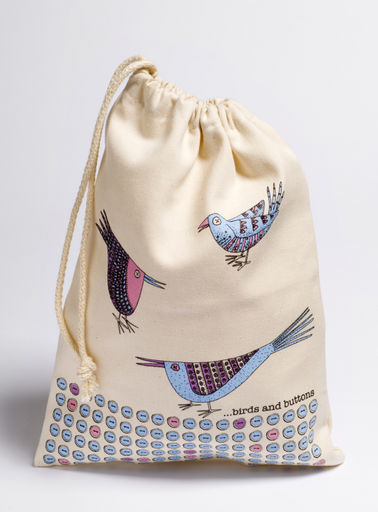 "What did you bring in your magic bag today Miss Babs? ", ask the students. The children are always curious about what is in my book bag when I visit them once a month in their classroom at Old County Road School in Smithfield. I make a big deal about what I have brought, doing mini- book talks, and getting them excited about what else I may have to share with them. Sometimes it is my monkey fingerplay puppet, shakers with a fun new CD or the hot potato game! We discuss the books as I read them with the children making interesting and thoughtful connections to their life and experiences they have had. When Miss Mennella volunteers as part of the summer reading program, the children often ask, "Did you bring an animal today?" or "What Robert Muncsh book are we reading. " She often ends her story time with one of his books because the children find his stories very funny. It certainly helps that Julie reads with much expression and animation. She also attends some of the special events I have booked as part of the summer reading program. Being such a good sport one year she even ate crickets when we had a presenter who shared some recipes that featured insects as an ingredient. Julie Mennella, the Integrated Kindergarten teacher and I are an amazing team. Our relationship falls together naturally, like we have always done it. We each bring different strengths to our collaboration and are respectful of each other. The students see Julie and I at the school and the public library -- places in their community that are important to them and to us. They know we are excited about books and love reading for enjoyment and learning. We have similar goals in mind that include valuing the importance of literacy and encouraging the children to be lifelong learners. It is very nice to have someone to bounce ideas around with as we brainstorm together about ongoing and future projects. We also share many laughs along the way which is always a good thing. Julie volunteers each Tuesday of the summer reading program where she runs a storyhour which always attracts many families from the community. Not only her current students but former students who follow her around like a rock star! She has children who return each summer to visit with her. The very first thing she did after being hired in Smithfield was to attend the storytime that was run by the principal of the school. She loved it and took over her slot the following summer. This coming year will be her sixth summer as the Tuesday 1:00 pm story and craft sharer. Julie's classroom is an Integrated Kindergarten comprised of eight peer models and seven students with special needs, or as she likes to refer to them, eight buddies and seven special friends. Animals are also a huge part of her delightful classroom. Her students love to read to the classroom pets. They offer comfort and let the children take a risk reading to them as they may not feel comfortable reading aloud in front of their friends. The classroom rats do not care if it takes a child longer to read a book or if some of the words do not make sense to the reader. Each September Julie and I also work together on the annual library field trip. I open up the library early for the students and our time together consists of me reading them a story, a tour of the library and presenting them with their very own first library card. It is a big deal because they are now in charge of their own books they have borrowed and they find it very exciting! Upon returning to school the children share the books with one another and proudly take them home to read with their families. Julie and I highly recommend cultivating a school and public library collaboration. It is a partnership that is important and beneficial to many as well as being a lot of fun. |
|
Pinterest For Libraries
By Megan Weeden
Youth Services Librarian,
Cranston Public Library, William Hall branch
| 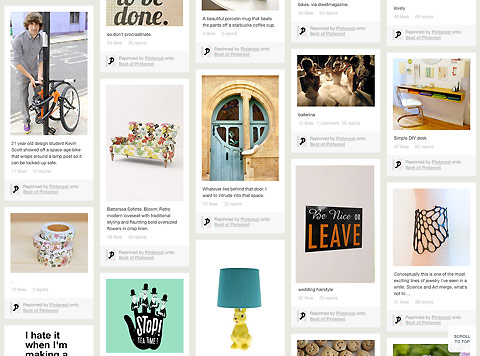 If you're not on it, you've probably heard of it by now. Pinterest, the latest social networking site, is a virtual pinboard that allows users to share and organize all the things that interest them. Think of it like a bulletin board with magazine clips tacked to it to inspire you to plant that garden you've been thinking about. Yet, easier. If you're not on it, you've probably heard of it by now. Pinterest, the latest social networking site, is a virtual pinboard that allows users to share and organize all the things that interest them. Think of it like a bulletin board with magazine clips tacked to it to inspire you to plant that garden you've been thinking about. Yet, easier.
It's currently invite-only, but you can request an invite or get invited by a friend. Once you've been invited, you have to register through your Facebook or Twitter accounts. Like other social networks, you build a list of people to follow. Some of these people you know because you're Facebook friends; others will be people you don't know at all - but you share a common interest. Users can follow all or some of another user's boards.
A "pin" is an image added to Pinterest. Once something is "pinned," it can be "repinned" by other users. Each time one of your pins gets repinned, you get an email letting you know. People use pinboards to plan their weddings, decorate their houses, and discover new recipes. And it's beginning to be used creatively by libraries.
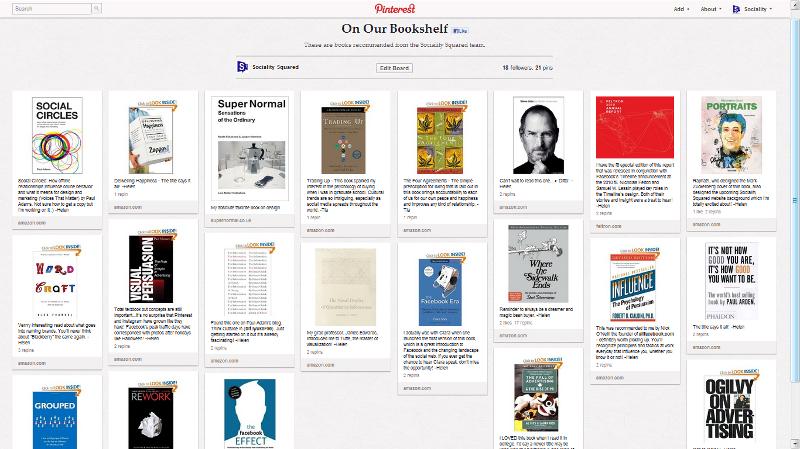
For example, Columbus Library (who has 124 followers on Pinterest) has created nine visual boards to promote its library services, including one titled "Facebook Chat Books." The board includes pins of seasonal book picks like Herb Gardening from the Ground Up.
The Fullerton Library's Pinterest page promotes itself with boards called "New in Non-Fiction," "New in Fiction," and "New in Downloadables." They have 131 followers (increasing from 129 when I began the article).
If I'm a library patron following the Fullerton Library, their pins will show up on my homepage. If I see a pin that I like, I can click on it and view the board it came from. I can quickly scroll through images of book covers and read short descriptions. If it interests me, I can simply "like it" and the link gets saved under likes; Or I can "pin it" to my own board, which may be called something like "Books I want to Read." If I click further, I am directed to the online catalog, where I can place a hold.
Pinterest user "Awesome Library" has created 17 boards including one called "Happening Now...Events" and promotes its library programs happening that week. New York Public Library is using Pinterest to promote its Digital Gallery of artwork.
As a youth services librarian, it actually saves me time and it's fun. I now use it to plan most, if not all, of my youth programs. I'm following a bunch of other children's librarians (most of whom I don't know), so their pins popup on my homepage. I quickly scroll through and see what looks interesting. When I stumble upon something I want to do for storytime, I "pin it" to my "storytime" board, where I save creative crafts, resources, and blogs related to childhood literacy. I have boards for crafts, books, teen programs and library displays.
Also, and I haven't tried this yet, but I can see the possibilities - you can allow friends on Pinterest to contribute to your boards. As we are planning for our summer reading program, I can invite fellow children's librarians to share their ideas.
|
|
SMS Reference: Leveraging APIs to save money
By Evan Barta
Coordinator of Technology, Warwick Public Library
|  It's not a stretch to say that texting has become an integral part of the way we communicate with each other. Texting provides us with a quick and easy way to talk to someone when a phone call isn't appropriate or convenient. Many factors have combined to bring about this age of texting-- unlimited texting plans, user-friendly and affordable smart phones, and a general approval of electronic communication as acceptable. Text-based reference is a natural fit for libraries because it does not require an immediate response, the way that an instant message does. If a staff member is away from the desk and a text comes in, the patron is not waiting patiently by a computer for an answer, but instead, they are continuing on with their day, assuming they will receive a response with 15 minutes or so. This is a much more reasonable task to accomplish with staff members that are often away from their desk helping patrons. So how can libraries leverage texting to enhance the way they communication with patrons? While there are a few companies that offer solutions to this problem, I found that they didn't accomplish it exactly as I wanted. First and foremost, I wanted something that would integrate seamlessly with our current workflow. I did not want to add "periodically check the cell phone" or "log into the texting website" to the laundry list of things that the busy reference staff already has to do. I also wanted to keep the process simple. Staff should be presented with a text, then respond to it in one-click. On the patrons end, I didn't want them to have to use any custom texting codes or "headlines" in their texts. I wanted them to text a number just like they do with every other text they send. Lastly, I wanted something that wouldn't break the bank. Unfortunately, this platform doesn't exist in the way I wanted it. While some companies had strong products with lots of features, I felt that I would be paying too much money for a service that, at its heart, is nothing more than a simple text interaction. Finally, I decided to use a platform called Twilio to develop my own system. Twilio is a company that has developed an API (application programming interface) that allows developers to easily manage voice and SMS data. Their API does all the "heavy lifting" of interacting with the phone system, so I am free to build simple apps based on standard coding practices. Many companies offer their products as APIs as a way to gain traffic and interest from other sites. A few popular APIs that you may have heard of include Google Maps, Facebook Connect and Paypal payments. It turns out that Twilio's API is considered to be one of the best and most powerful, and it is used by many big companies like Sony, eBay and Walmart. The best part is that each phone number costs $1 a month to rent, and each text costs 1 cent. So even if we have 500 texts a month, our final cost will only be $6, as compared to $70, the cheapest competitor I could find. The biggest expense in this process was the time that I spent learning the code to interact with the API. While this can be a lengthy process, I found it to be worthwhile considering the amount of knowledge I gained and the amount of money I saved. But without the use of the Twilio API, this entire project would have never come to fruition. APIs have become an integral part of web application development as they can provide an easy way to save time and money for everyone involved. |
|
News From the Field
|
Providence Community Library
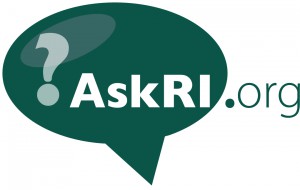 PCL is proud to announce that they have been selected to receive the the Statewide Reference Resource Center: Operations Grant award for 2013 PCL is proud to announce that they have been selected to receive the the Statewide Reference Resource Center: Operations Grant award for 2013. The Statewide Reference Resource Center is at the forefront of defining and providing a cluster of online library services that serve all the people of Rhode Island. Available at statewide scale, these service offer Rhode Islanders access to critical learning, research and recreational resources in a cost effective manner in their public, school and academic libraries as well as at home and wherever else they can get online. Through the Statewide Reference Resource Center those resources are also available in a user friendly way to lifelong learners of every age and status. PCL will be working with OLIS in the coming months to work out a plan for the transition, and will officially take over the SRRC in July.
Cranston
The Library Board of Trustees are pleased to announce the appointment of Edward Garcia as the new Library Director of the Cranston Public Library. Ed began his new role on March 2, 2012.
Ed joined the Cranston Public Library as an intern in 2006. After a stint as Assistant Director of the Central Falls Free Public Library, he returned to Cranston as Information Access Librarian in late 2008. In August 2011 he was appointed Technology Coordinator.
Cross Mills Nomi Hague has been appointed the Young Adult and Reference Librarian at the Cross Mills Public Library in Charlestown. Nomi was previously a Young Adult Librarian at the East Providence Public Library.
Warwick Andrea Hutnak and Jayne Lear have joined the staff of the Warwick Public Library as a children's librarian and a reference librarian, respectively. Andrea has worked as a children's librarian at the Pawtucket and Lincoln Public Libraries, and Jayne most recently worked at the Foster Public Library. 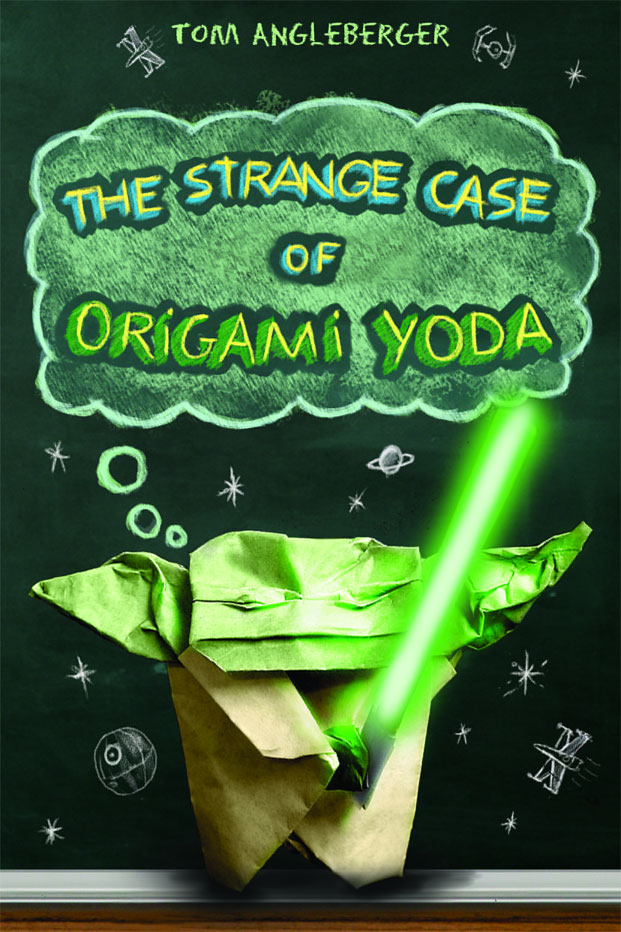
RI Children's Book Award The 2012 winner of the RICBA is The Strange case of Origami Yoga by Tom Angleberger. Origami Yoda swept the competition by netting 1213 of the 6954 votes. 73 schools and one public library participated in the voting.
In second place was Pop: The Invention of Bubblegum by Meghan McCarthy and in third Lulu and the Brontosaurus by Judith Viorst.
Events
Money Smart Week @ Your Library a CE for Library Staff
Wednesday, March 21, 2012
9:30 a.m. - 11:30 a.m.
Cranston Public Library
Presenter(s)/Discussion Leader(s): Dr. Joan Gray Anderson & Claudia M. Kerbel, Center for Personal Financial Education, University of Rhode Island; Megan Smith, Safe House Coordinator, Sojourner House The Federal Reserve Bank of Chicago and the American Library Association developed Money Smart Week @ your library to promote personal financial literacy. Over 30 states participated in 2011 and this year the Rhode Island Library Association is bringing the program to RI libraries around the state. Money Smart Week 2012 will take place April 21-28. For more details and the full schedule of events, see the RILA website. Call for Nominations If you know of a librarian, trustee or legislator who has done something really outstanding this past year and you'd like to see them recognized, now is the time! RILA will be considering nominations for Librarian, Trustee, and Legislator of the Year, to be awarded at the Annual Conference. Please email your letter to me (Laura Marlane) at lmarlane@provcomlib.org by April 6th, with your nominee and the reasons why they should be considered and what they've done to be an outstanding individual at your library. |
|
The RILA Bulletin is produced by the RILA Communications Committee. The RILA Communications Committee is responsible for publicizing and supporting Rhode Island Library Association activities using a variety of communication tools. Responsibilities including publishing the RILA Bulletin, managing social media platforms such as Facebook and Twitter, and exploring other mediums as needed. The Communications Committee may cooperate with the publicity efforts of the Public Relations Committee to promote library services statewide.
Rhode Island Library Association members can contribute content to the RILA Bulletin by emailing the editors: rilabulletin@gmail.com Corrie MacDonald & Andria Tieman
|
|
|